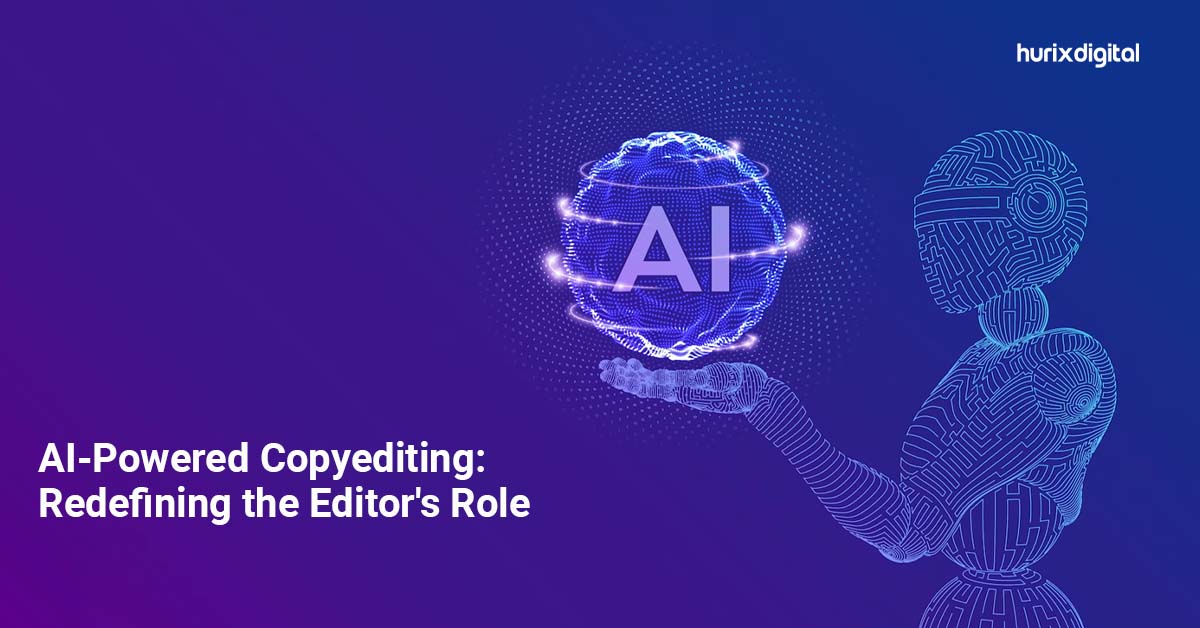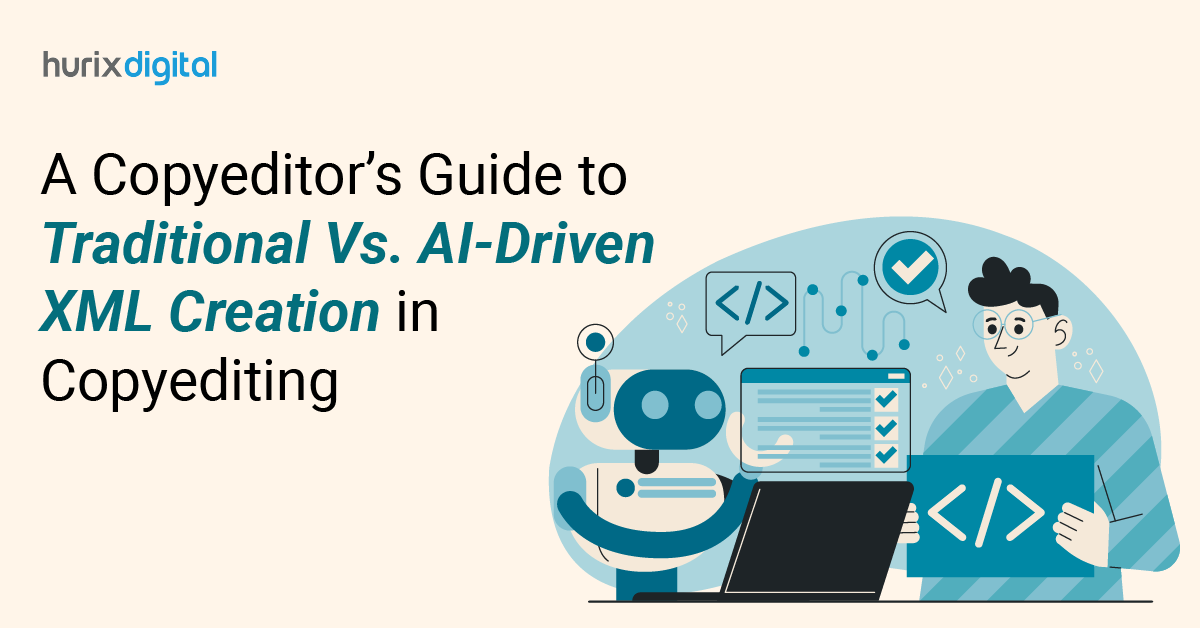
AI-Powered Copyediting: Redefining the Editor’s Role
Summary
The article touches on the influence AI-assisted copyediting has on editors’ work. Various content enhancement methods are discussed, focusing on how AI is applied to these methods. The article demonstrates how editors can use AI to optimize their work processes. Instead of editing normal content, they aim to perfect high-level content
Understanding the influence of artificial intelligence on copyediting and its process is pivotal. There is no denying that the addition of AI has revolutionized the entire process, quickening the pace at which text is produced and improving the quality of the text.
The evolution of content marketing has been widely appreciated. In 2024, the global worth of AI-powered content marketing is estimated to increase by 24% and reach three times more by 2027.
With the help of AI copyediting services, editors can embrace the tactical part of their jobs, such as focusing on the content strategy, tone, or voice, and leave the menial tasks and useful analytics behind.
In the subsequent views, we will explore how AI is changing the traditional image of a copyeditor and how it shapes the future of content creation.
Table of Contents:
- 5 Ways AI Can Be Used in Copyediting
- Artificial Intelligence in Language Editing
- Artificial Intelligence in Technical Editing
- Challenges in AI-Powered Copyediting
- AI-Powered Copyediting: Practical Solutions
- Conclusion
- Frequently Asked Questions
5 Ways AI Can Be Used in Copyediting
Here are five primary ways that AI can be used in copyediting:
- Grammar and Spelling Checks: Certain applications available now, such as Grammarly and ProWritingAid, can provide an interface that is scanable by a user and can search for grammar and spelling errors in the text. The advancement in algorithms enables these tools to highlight mistakes accurately and provide suggestions, simplifying the copyediting task.
- Style and Tone Checks: AI-enabled tools can also monitor the appropriate use of style and tone in a particular piece of writing. This is useful in ensuring that the piece flows and is not too hard to comprehend.
- Plagiarism Detection: Similar to most capabilities, AI-enabled tools can also fight against plagiarism by employing a particular English text and assisting copyeditors in dealing with such issues.
- Automated Editing: Automated editing software tools such as EditMate and Scribendi also fall under the category of AI, which aims to streamline and even take over copyediting activities. This is quite useful in curtailing the effort and time spent by copy editors, as these tools highlight and rectify the mistakes quickly.
- Natural Language Processing: AI natural language processing (NLP) can also apply text structure and meaning in analytical analysis, which would assist copyeditors in understanding which aspects need more work or clarification.
Overall, AI can help copyeditors work more efficiently and effectively, allowing them to focus on higher-level tasks, such as improving the overall quality of the writing and ensuring that it meets the intended audience’s needs.
Also Read: The Role of AI in Transforming Copyediting: A Comprehensive Guide
Artificial Intelligence in Language Editing
Editing tools powered by Artificial Intelligence (AI) employ natural language processing (NLP) technologies to detect weaknesses in composing readable text and improve its quality. These tools may serve a myriad of purposes, including academic writing, professional writing and correspondence, and even personal letters.
The most striking benefit of AI language editing applications is perhaps the fact that they can spot likely grammatical mistakes and typos almost instantly. They can spot misspellings, incorrect punctuation, and style lapses. In addition, these applications may enhance the document’s clarity and provide shorter forms of expression where possible.
Another advantage of AI-powered language editing applications is that they improve with successive users. Since these applications help users use a large volume of textual material, they mold themselves into the system and understand the typical errors. Thus, it becomes easier for them to learn to offer better assistance to users.
Artificial Intelligence in Technical Editing
In recent years, Artificial Intelligence (AI) has made remarkable progress in automating the process of editing technical documents, such as user manuals, technical reports, and scholarly articles, which involves reviewing them for accuracy and consistency in clarity and content.
Editing software for technical documents deployed with AI technology processes the content of technical documents by applying natural language processing (NLP) algorithms and provides recommendations for technical text enhancement. It can also suggest corrections for technical language and jargon, grammar, punctuation, and borders or text styles.
Challenges in AI-Powered Copyediting
While AI has advanced significantly in natural language processing (NLP), it cannot fully comprehend human language’s nuances, context, and complexities. It is crucial to use AI-powered technical editing tools as a supplement to, rather than a replacement for, human editing.
The depth, originality, and critical thinking that human editors bring to content creation may be absent from AI-generated material. Furthermore, AI systems might not always correctly detect and fix mistakes, especially in intricate or subtle texts.
Ethical copywriters must exercise caution when utilizing AI tools, avoiding blind reliance on their suggestions. They must scrutinize AI-generated content, ensure originality, and supplement it with thorough research and critical thinking.
Also Read: Ethical Considerations in AI-Based Copyediting: Challenges and Solutions
AI-Powered Copyediting: Practical Solutions
To triumph over the challenges, optimum collaboration between AI and human editors is required. With the help of strengths from both parties, organizations can produce optimum results.
Some strategies to take advantage of the limitations of AI and perform at the maximum level are given below:
1. Human Control
The editors have a vital role in ensuring the quality and accuracy of AI content. They use their linguistic skills and contextual know-how to upgrade and perfect the work generated by artificial intelligence to meet the highest standards of quality and clarity.
2. Continuous Training and Improvement
AI models have to be continuously trained on high-quality data to be developed to be better with a minimum possibility of error.
3. Transparent Communication
Clear communication between AI developers, editors, and content creators is also important in establishing expectations and addressing potential issues.
4. Ethical Considerations
Establishing guidelines that address key concerns are crucial to ensure AI’s ethical use and deployment. These guidelines should consider factors such as bias mitigation, transparency, accountability, and privacy.
5. Blended Approach
Human ability being harmoniously used along with the AI tool will enable a powerful synergy for better content quality.
Conclusion
Automation is increasingly becoming part of technical writing and editing. This should help writers and editors produce high-quality content without mistakes.
Nevertheless, AI copyediting services should not be regarded as a replacement for the human element. The role of human technical editors will remain critical in ensuring the precision, clarity, and effectiveness of all technical documents.
At Hurix Digital, a worldwide leader in content and technology solutions, we help organizations deliver exceptional learning journeys to their end users. Quality and innovation are at the heart of our business, and we harness the power of AI to improve your content development process.
Our team of expert editors and designers provides the best AI copyediting services to ensure your content is accurate, engaging, and impactful.
Partner with Hurix Digital to transform your content and drive learning outcomes.
Contact us to know more!
Frequently Asked Questions
Q1. What are AI copyediting tools?
AI-powered copyediting tools are computer programs that use AI to help with proofreading and editing. In addition to pointing out and fixing grammatical mistakes, these tools can recommend sentence structure and clarity changes and suggest tone and style.
Q2. Can human editors be replaced by copyediting technologies driven by AI?
AI tools can be useful but can’t completely replace human editors. AI technologies might not have the same sophisticated grasp of language, culture, and context as human editors. They are also capable of subjectively judging voice, tone, and style—all of which are often outside the purview of AI.
Q3. What possible drawbacks might AI-powered copyediting products have?
Despite their capabilities, AI copyediting services have drawbacks. They may find complex language, subtle meanings, and context-specific nuances difficult to interpret. For precise and efficient editing, it’s crucial to use these tools as aids rather than as substitutes.

Vice President – Content Transformation at HurixDigital, based in Chennai. With nearly 20 years in digital content, he leads large-scale transformation and accessibility initiatives. A frequent presenter (e.g., London Book Fair 2025), Gokulnath drives AI-powered publishing solutions and inclusive content strategies for global clients





